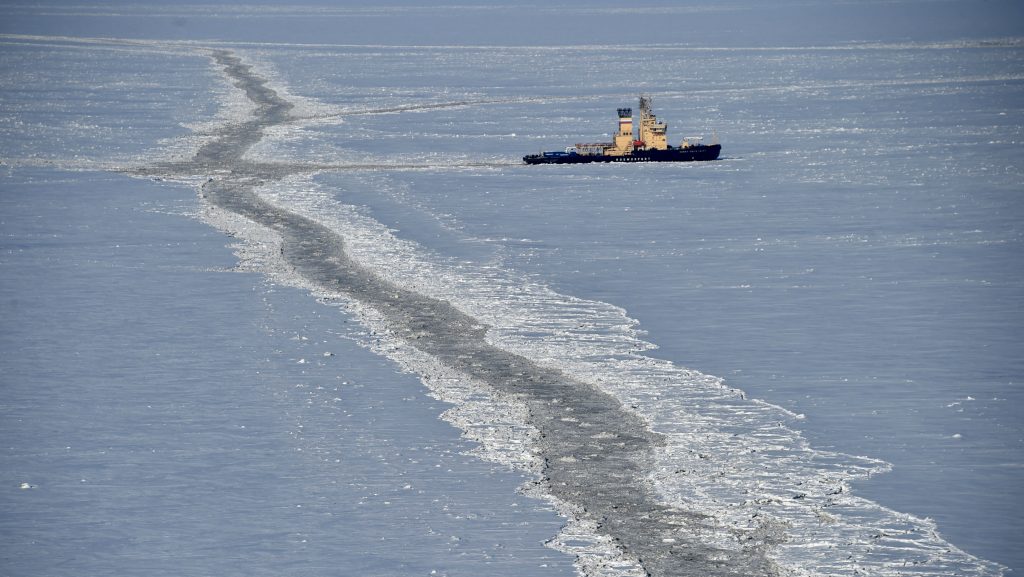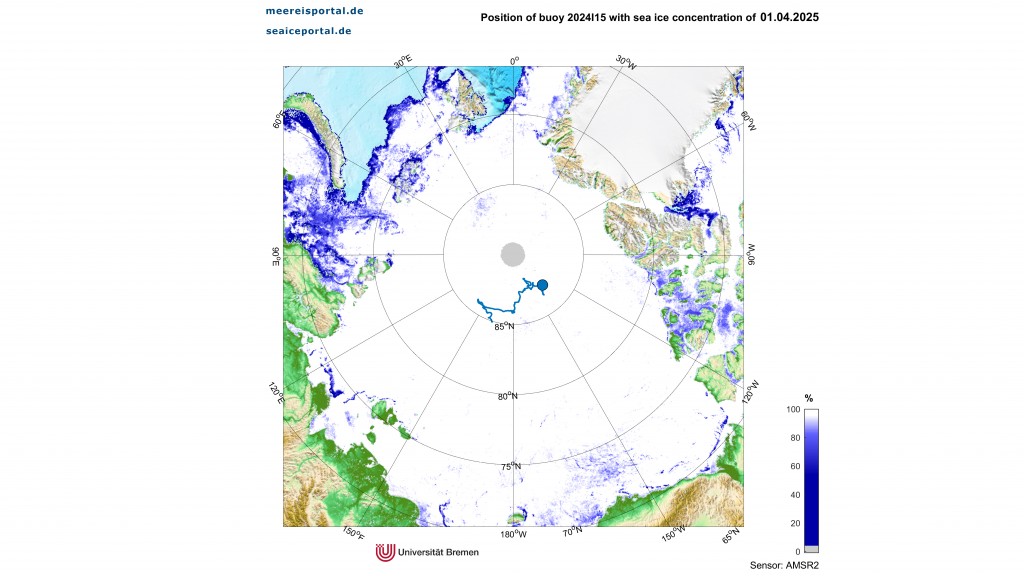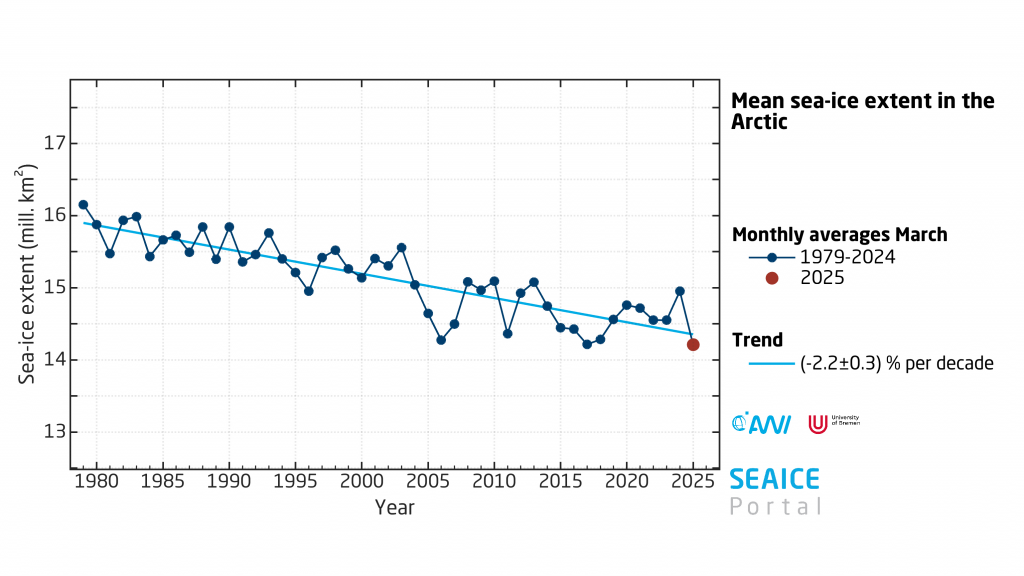Arctic sea ice hits record low March, raising concerns for summer extent

The Arctic’s winter ice extent reached its lowest recorded level in March since satellite monitoring began in 1979.
On March 21, 2025, the sea ice cover measured 14.45 million square kilometres—more than a million square kilometres below the long-term average for the period of 1981–2010.
“This level is 1.13 million square kilometres below the long-term average for recorded levels in 1981–2010, roughly equivalent in size to the surface area of France and Germany combined,” the Alfred Wegener Institute in Germany said in a statement on Friday.
“Only once – in 2017 – has average Arctic sea ice cover reached such low levels since monitoring began in 1979.”
- Lowest Recorded Sea Ice Extent: 14.45 million square km (March 21, 2025). Lowest extent since satellite monitoring began in 1979.
- Difference from Long-Term Average: 1.13 million square km below the 1981–2010 average.
- Historical Comparison: Only once—in 2017—has Arctic sea ice extent reached similar low levels.
Arctic sea ice grows and thaws with the seasons.
The extent is largest during the winter months of February and March. From there, it shrinks over the summer, reaching its minimum in September before starting to grow again.
Regional impacts
But while overall ice extent was down this winter, ice conditions remained uneven on a regional level.
More ice than usual formed in the colder Laptev and Kara Seas, while in the warmer Barents Sea, the ice edge shifted north as winds pushed the ice from Russia towards the Central Arctic.

“Some of our ice buoys, which drift across the Arctic and transmit data via satellite, recorded temperatures of just –5 C above the ice at some points during January and February 2025,” Thomas Krumpen, a sea-ice physicist at the AWI’s Helmholtz Centre for Polar and Marine Research (AWI).
“In February, temperatures in some regions reached 16 °C above the past average, as the map of temperature anomalies shows. This will have reduced ice growth in some regions, with this effect evident in modelling and satellite data.”
- Temperature Anomalies: Some regions experienced temperatures 16°C above the past average in February 2025.
- Sea Ice Reduction Trend: Sea ice coverage has decreased by 2.5% per decade over the last 40 years.
- Sea Ice Movement: Above-average levels of old, thick sea ice observed leaving the Arctic through Fram Strait due to drift patterns.
- Future Projections: Potential for low sea ice extent this summer due to declining older, thicker ice.
Predictions for summer
AWI researchers say the sea-ice formation patterns observed in the first three months of 2025 will help them make ‘cautious’ predictions about what to expect for sea ice over the summer, including the possibility of a low extent due to the decline in older, thicker ice, which is more resistant to melting than newer ice.
“In recent months, for example, we’ve observed above-average levels of old and thick sea ice leaving the Arctic through the Fram Strait, presumably as a consequence of unusual drift constellations in previous years,” Krumpen said.

“Nevertheless, weather and ocean conditions” could still play a significant role in slowing sea-ice melting, with the potential for significant regional variations, and could yet prevent the summer extent dropping below the record low set in 2012, he said.
“But that doesn’t change anything about the enduring reduction in sea ice levels.”
Over the last 40 years, sea ice coverage has reduced by approximately 2.5 per cent each decade, AWI said.
Comments, tips or story ideas? Contact Eilís at eilis.quinn(at)cbc.ca
Canada: Global sea ice hits all-time February minimum, with Arctic, Antarctic declines, Eye on the Arctic
Greenland: Greenland drone research could help better predict ice loss, Eye on the Arctic
Russia: Atlantification ushering in new era of sea ice loss in the Siberian Arctic, Eye on the Arc



